For clay soil windbreaks, your best options include Eastern Red Cedar, Norway Spruce, and Leyland Cypress. Eastern Red Cedar offers year-round protection with 1-2 feet of annual growth. Norway Spruce impresses with growth up to 3 feet yearly and thrives in heavy clay. Leyland Cypress excels with 3-5 feet of annual growth and remarkable clay soil adaptability. Proper planting techniques using oversized holes and organic matter will maximize your windbreak’s effectiveness and longevity.
Deciduous Champions: Dawn Redwood and Eastern Red Cedar
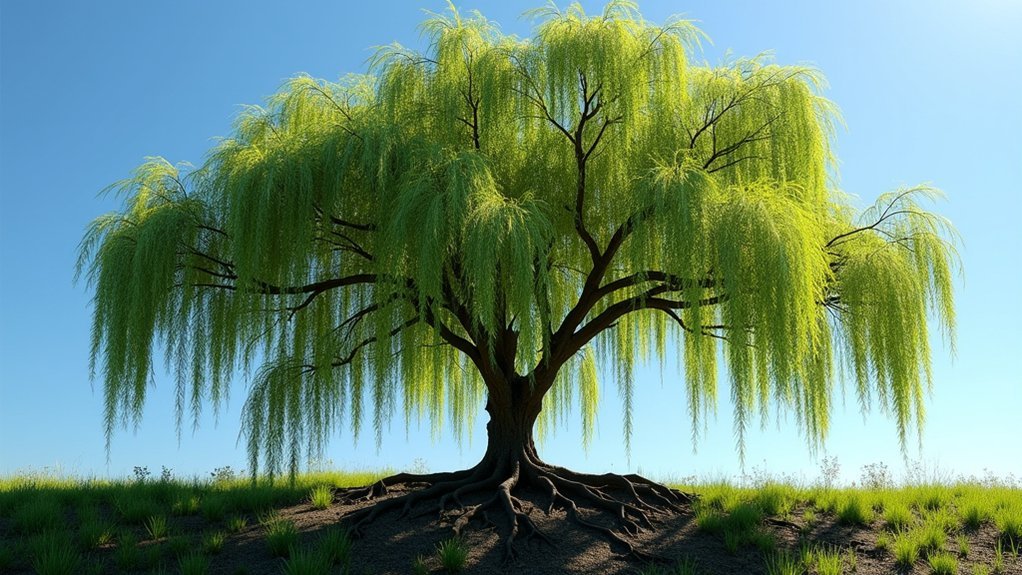
When establishing windbreaks in clay soil, two exceptional trees stand out for their resilience and effectiveness: the Dawn Redwood and Eastern Red Cedar.
The Dawn Redwood thrives in heavy clay soils, reaching heights of 25 feet with a rapid growth rate of 13-24 inches annually. You’ll appreciate its deciduous nature, allowing winter sunlight while providing substantial wind protection during leafy seasons.
Eastern Red Cedar offers year-round cover, maintaining its dense foliage throughout all seasons. With a mature height of 40-50 feet and fast growth of 1-2 feet per year, it quickly establishes strong wind barriers in challenging soil conditions.
Both trees enhance biodiversity by creating valuable wildlife habitat—offering food and shelter while performing their primary function as sturdy windbreaks. Their adaptability to clay makes them ideal choices for difficult planting sites.
Evergreen Solutions: Norway Spruce and Leyland Cypress
Powerhouses in the evergreen category, Norway Spruce and Leyland Cypress offer exceptional windbreak performance in challenging clay soils.
These evergreen trees maintain dense foliage year-round, creating effective barriers against harsh winds while enhancing privacy for your property.
You’ll appreciate the remarkable growth rate of Norway Spruce, which can add up to 3 feet annually, thriving in various soil conditions including heavy clay.
Meanwhile, Leyland Cypress demonstrates even more impressive gains of 3-5 feet per year, quickly reaching heights of 60-70 feet.
Both trees exhibit outstanding adaptability to clay soil, resisting the waterlogging issues that plague many other species.
For maximum effectiveness, plant them in staggered rows to greatly reduce wind speeds and create a more favorable microclimate for your other garden plants.
Optimal Planting Techniques for Long-Term Windbreak Success
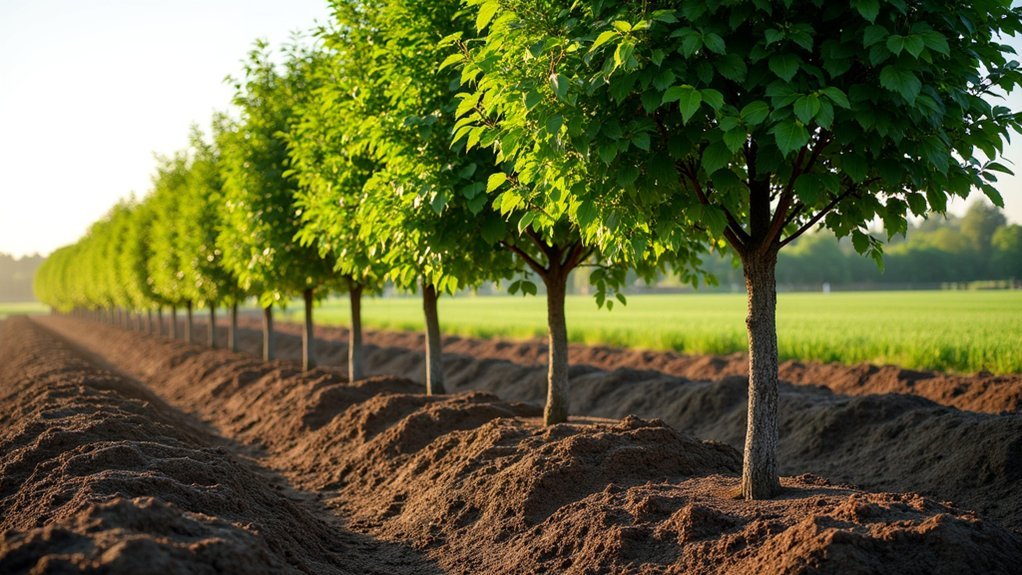
Successful windbreak establishment in clay soil requires specialized planting techniques that set your trees up for decades of effective service.
Dig oversized planting holes to improve drainage and help roots penetrate the dense clay soil. Mix organic matter into your planting pit to enhance soil structure and moisture retention, critical factors for healthy growth.
Plant your windbreak trees in autumn to maximize root establishment before summer heat arrives.
Maintain a one-meter weed-free area around each tree to eliminate competition for nutrients and water. Don’t overlook regular watering, especially during the first few seasons, as clay soil can harden dramatically during dry periods.
These fundamental planting techniques will greatly improve survival rates and guarantee your windbreak trees develop into a robust protective barrier over time.
Frequently Asked Questions
What Is the Best Cover Crop to Break up Clay Soil?
Daikon radish is your best choice for breaking up clay soil. Its long taproots penetrate deep, loosening compaction and improving drainage. You’ll also benefit from legumes like hairy vetch that add nitrogen while improving structure.
Which of the Following Trees Grow Best in Clayey Soil?
For clayey soil, you’ll find that alder, crabapple, Japanese Rowan, birch, and Japanese dogwood all thrive well. They’re adaptable to poor drainage and heavy moisture conditions that clay soils typically present.
What Trees Grow Best in Heavy Clay Soil?
You’ll find Crab Apple, Alder, and Japanese Rowan thrive in heavy clay soil. Don’t overlook Birch with its attractive bark and Japanese Dogwood. For Magnolia, improve drainage with peat-free compost first.
What Is the Fastest Growing Tree for a Windbreak?
Leyland Cypress is your fastest windbreak option, growing 3-5 feet yearly and reaching 60-70 feet. You’ll also get rapid results with Thuja ‘Green Giant’ which grows at the same rate but tops out shorter.
In Summary
You’ve got excellent options for clay soil windbreaks with Dawn Redwood, Eastern Red Cedar, Norway Spruce, and Leyland Cypress. Each offers unique benefits, whether you’re seeking seasonal change or year-round protection. Remember to implement proper planting techniques—adequate spacing, soil amendments, and regular maintenance—to guarantee your windbreak thrives. With these clay-tolerant selections, you’ll enjoy reduced wind damage and a more comfortable outdoor environment for years to come.

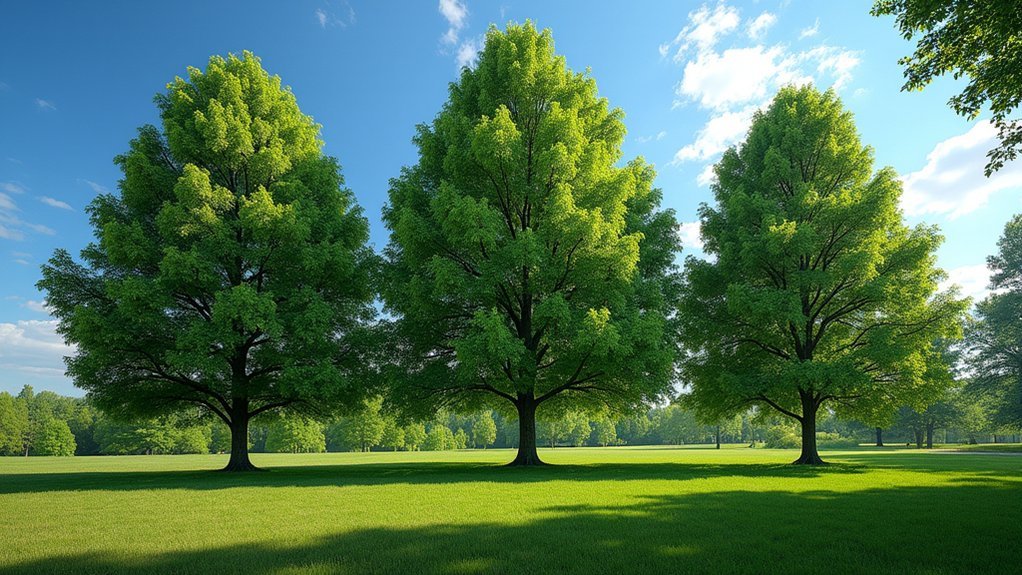

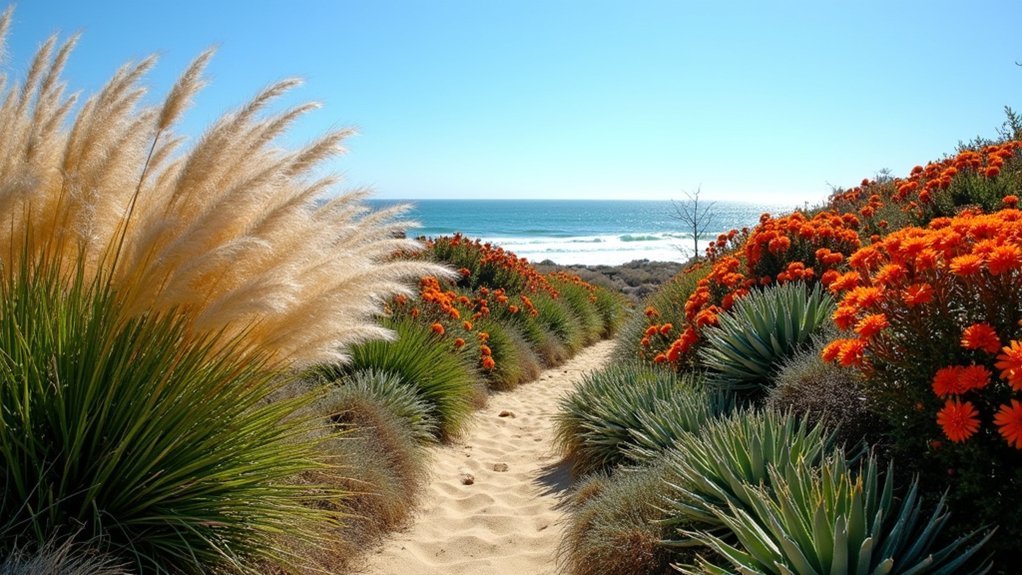
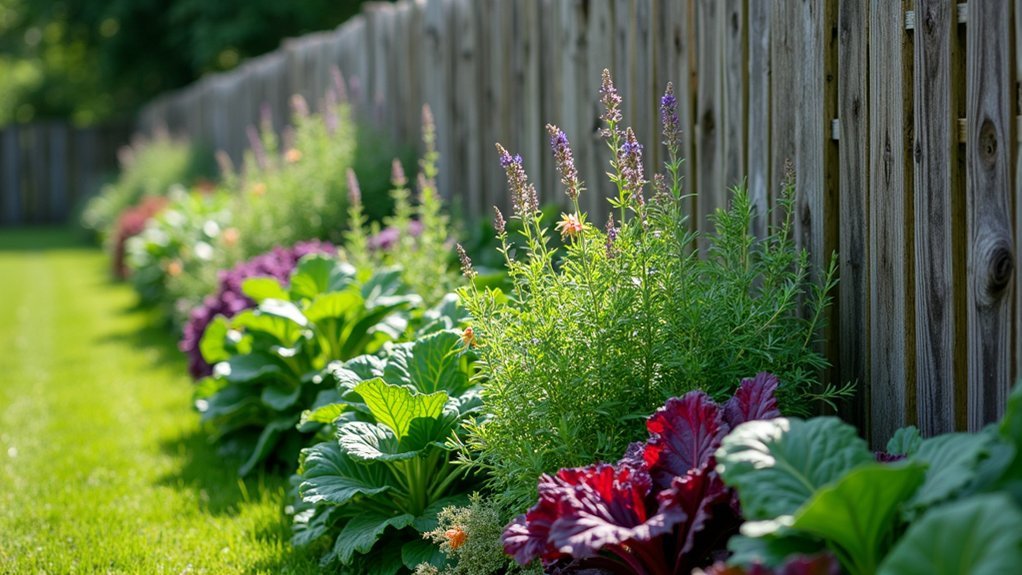
Leave a Reply